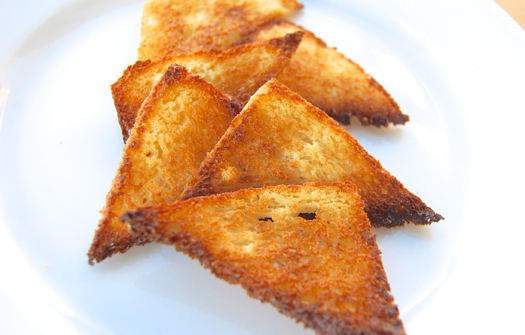Making Melba Toast

The operative logic behind melba toast seems to be: if you’re going to eat nothing you might as well make it interesting. There’s no question that Escoffier did as much as he could with what he had to work with here. This is as interesting as dry toast gets. Start by turning on your oven’s broiler and procuring some bread. If it’s already a little stale, so much the better. This is some leftover brioche because honestly plain white bread was too much nothing even for me.
READ ON
